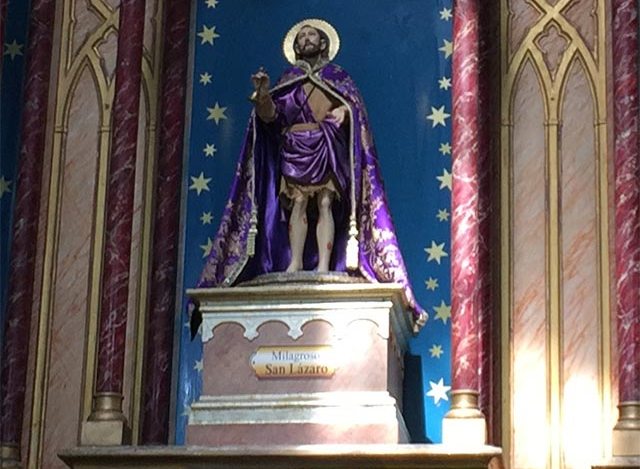Cayman has its own semi-precious stone, Caymanite. It is worked into attractive jewelry.

By Caribe Insider
Every year, on December 17th thousands of Cubans motivated by their fervor towards San Lazaro or Babalú Ayé direct their steps towards the Sanctuary del Rincón, a town near Santiago de las Vegas, many arrive kneeling, dragging a stone or doing the most diverse sacrifices on walks that go on for miles and miles.
They will thank their saint, venerate him, and deposit before their altar the most diverse offerings, ranging from sportsmen's medals, money, candles, sunflowers, jewelry, layette clothes, at the same time they ask for health, protection, a miracle for them, their children or their relatives with the conviction that his power can do anything.
The devotion to Saint Lazarus or Babalu Aye, as it is also known, is recognized by believers in the Yoruba religion that has the second in terms of national scope and tradition in Cuba, only surpassed for the festivity in honor of the Virgen de la Caridad del Cobre.
The devotion that moves the procession is not to worship Saint Lazarus Bishop of Marseille of the Catholic Church, who presides over the high altar of the sanctuary, but to St. Lazarus on crutches and the two dogs, dressed in obvious poverty and full of sores, which dogs lick to ease the pain. That is the Saint Lazarus venerated by the people of Cuba.
That's why every December 17th thousands of devotees in the center or high altar is San Lazaro Obispo, and the left is St. Lazarus the Miracle, the oldest image of the temple.
There is a fountain behind the chapel, which is considered blessed and where parishioners drink water or moisten different parts of their body, which require healing, or keep it in containers to take it home.
In 1917 the Sanctuary dedicated to Saint Lazarus was inaugurated in the town El Rincón, current municipality of Boyeros, about 30 kilometers from the center of Havana. In the neighboring area there is a Dermatological Hospital, which is popularly called Leprosorio, because San Lazarus is also associated with leprosy patients.
It is worth saying that those who cannot go to the hermitage, equally venerate the saint in their homes, where they wait for the date at 12:00 night with altars where figurines of him appear, together with his dogs that lick their sores, and where sunflowers, candles, corn, toast, roasted corn, burnt bread, coconut water, dry wine and fabrics of purple color, the color with which Babalú Ayé is identified, and some wear garments made of jute fabrics.
There is much fervor emanating from the celebration of December 17th in Cuba, a date awaited by devotees to venerate their saint, to pray, thank the requests granted, all under the conviction that he can perform the miracle.

Cayman has its own semi-precious stone, Caymanite. It is worked into attractive jewelry.